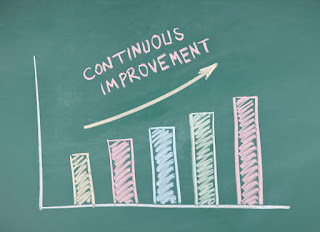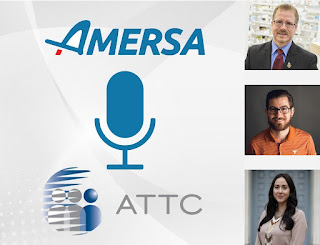Mark Sanders, LCSW, CADC, is the Illinois State Project Manager for the Great Lakes ATTC, MHTTC, and PTTC. Mark is a published author, trainer, educator, and mentor, as well as the founder of the Online Museum of African American Addictions, Treatment, and Recovery and the co-founder of Serenity Academy of Chicago, the only recovery high school in Illinois.
If you have never attended a training hosted by Mark Sanders, you're missing out. Mark has a unique ability to be at once both energizing and reassuring. His presentations are equal parts inspiration and intellect – a captivating mix of stories, memoire, and facts. He has motivated and educated countless members of the SUD workforce throughout his nearly 40-year career. For these reasons and many more, Mark Sanders, LCSW, CADC, has been selected as the recipient of the 2021 NAADAC Enlightenment Award, the 2021 Community Behavioral Healthcare Association of Illinois Frank Anselmo Lifetime Achievement Award, and the Illinois Association for Behavioral Health’s 2021 Lawrence Goodman Friend of the Field Award.
The Great Lakes ATTC, MHTTC, and PTTC congratulate our colleague, Mark Sanders, on these well-deserved awards for his many years of exemplary service and leadership. In celebration of his accomplishments, we asked Mark to share his thoughts on the field of SUD recovery services and how he has achieved success throughout his career.
 |
| Lawrence Goodman Friend of the Field Award |
 |
| Frank Anselmo Lifetime Achievement Award |
What inspired you to enter the fields of social work and substance use disorder recovery services?
I graduated from my undergraduate program at 21 years old with a bachelor’s degree in social work and sociology. It's January and I'm standing at a bus stop with no job, a diploma underneath my arm, and I see a blinking neon sign that says, “Youth Center.” So, I walked in. As I waited to speak with someone, I noticed some books stacked in the corner of the room. I figured I may as well read while I wait, and the book I picked up was Another Chance [sic] by Sharon Wegscheider-Cruse. She talked about addiction, alcoholism, and families with roles like those of my own family members. I came from a family with lots of alcohol use disorder and substance use disorder, and I saw my family in that book.
Eventually, I spoke with a member of the adolescent substance use disorders program at this youth center. I asked if they had any openings for counselors. They said they needed a strong male counselor, and I thought to myself, I don't know how strong I am, but I am a male counselor. And so, I was hired. For 39 years, I've been in this particular industry, helping individuals with their recovery. What’s kept me going is seeing the many clients over the years who have achieved recovery. I often think of the famous saying, “The flap of a butterfly's wings in Brazil can cause an earthquake in Texas,” and what I've come to realize is each time a client recovers, they go on to help others. The work never ends, and the results are magnified.
How have you seen the substance use disorder field change over time?
When I first became a counselor, we had one technique with clients: confrontation. Early in my career, I learned that a good substance use disorders counselor should be like a prosecuting attorney, like Perry Mason, and our job is to cross examine clients to get them to confess it all. What we’ve learned years later is that approach doesn’t work. The field has transitioned to using evidence-based practices, such as motivational interviewing and multiple pathways of recovery, and this has greatly improved our clients’ ability to achieve positive outcomes.
Another big change that occurred is in our language and the way we talk about substance use disorders. There is a Native American phrase that says, “If you want to appreciate something, call it a flower. If you want to destroy it, call it a weed.” Practitioners began using fewer stigmatizing words and phrases and doing so helped reframe our understanding of substance use disorder as a chronic condition, like cancer and diabetes, and not a moral failing. We’ve discovered that more and more people are seeking help because we are reducing stigma through language alone.
Is there one expert or scholar who's inspired you or guided you?
Yes – my mentor, William White. He's known by many as a substance use disorders professional historian, but when I first met him, he was a trainer. Decades ago, I told my friends and colleagues that I wanted to be a trainer. Everyone said, if you want to be a trainer, you need to meet William White. He’s so charismatic – amongst the best trainers in our field.
One Friday night, William was hosting a workshop. I showed up, shy and nervous to approach him because of his reputation, but eventually, I introduced myself to him. He was so approachable and easy to talk to. We had lunch and he shared his knowledge with me and answered all my questions. He inspired me to become a mentor myself. One of the greatest lessons he passed down to me is that people who are truly grateful for what they've learned from this profession freely give it away. They pass it forward to the next generation.
What advice would you give to future social workers and counselors?
Many people who enter this profession feel they’ve been called to do this work. You may be so busy working, trying to save human souls and help people recover, that you forget to take care of yourself. My advice for you is to take a break every day. Take your whole lunch hour. Treat your evenings and weekends as sacred time. Rest and replenish yourself so you can continue helping people without sacrificing your own wellbeing.
Another piece of advice that I’d offer to future professionals is that it’s important you understand the history of what happened before you entered the field. You will be more successful in building up this profession if you understand its history.
What are some things that you do for your own self-care?
I enjoy quiet time. I listen to music. I take walks. I like to relax and watch Netflix. I spend time with friends – that's really, really important to me. You see, at my age now, if I live as long as most African American men, I only have about 450 weekends left. I need to enjoy the time I spend with my family and friends, and my weekends have to count.
What are you most excited about as you go forward in this part of your career?
Part of my legacy is the Online Museum of African American Addictions, Treatment, and Recovery. I intend to keep building that website so that clinicians coming into the profession will have culturally relevant information about working with African Americans with substance use disorders.
I’m also really passionate about the importance of quality clinical supervision. You can’t implement evidence-based practices unless there's quality clinical supervision.
Finally, I’m excited about welcoming the next generation of professionals to the field and making sure we leave them the tools and information they’ll need to be able to move the field forward.














































